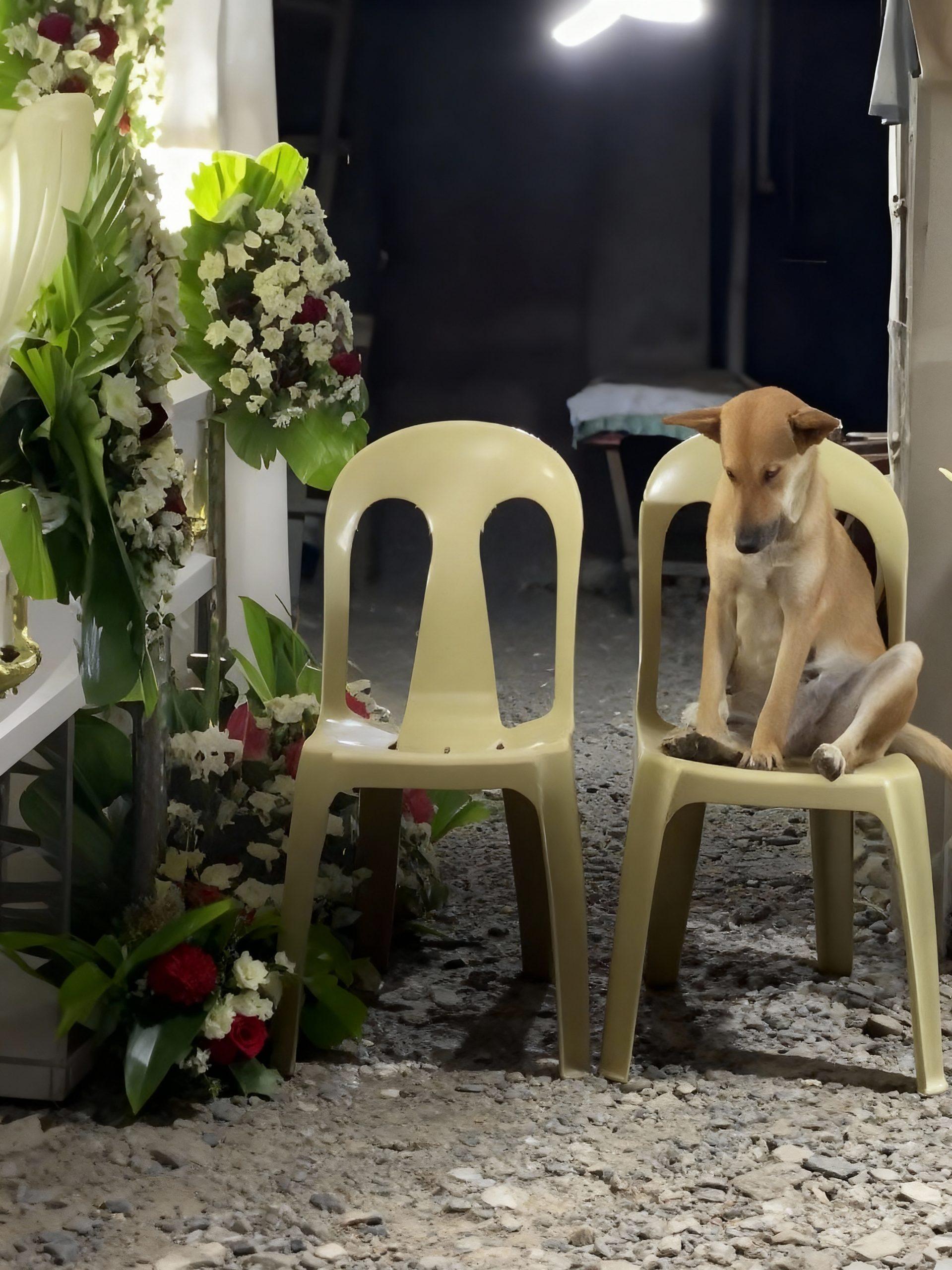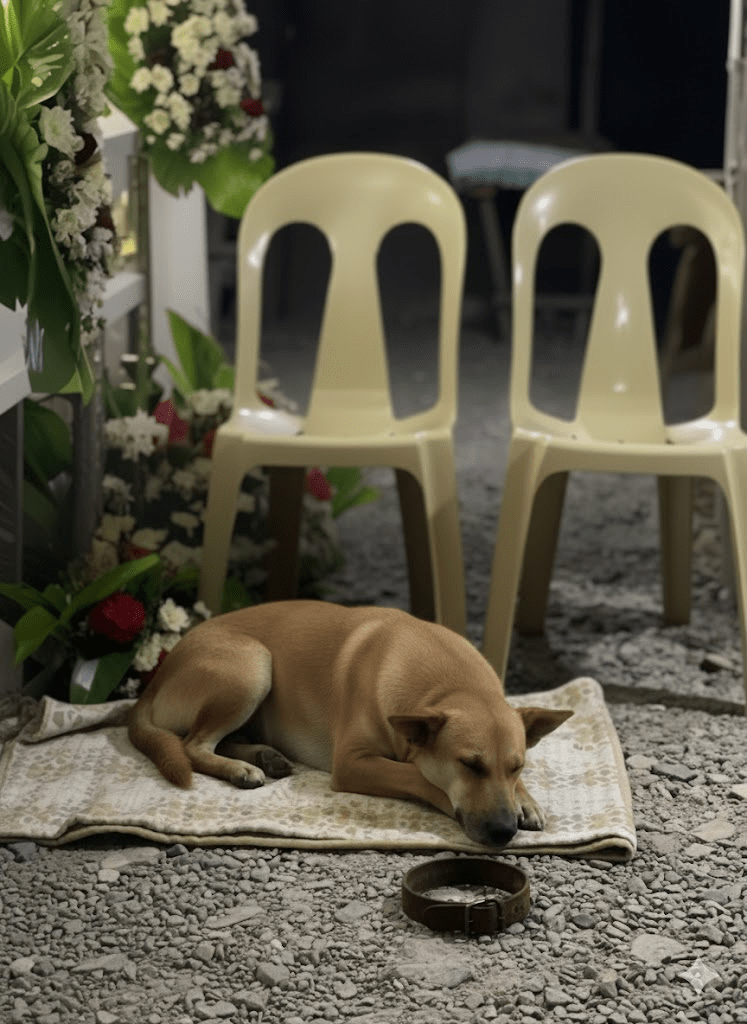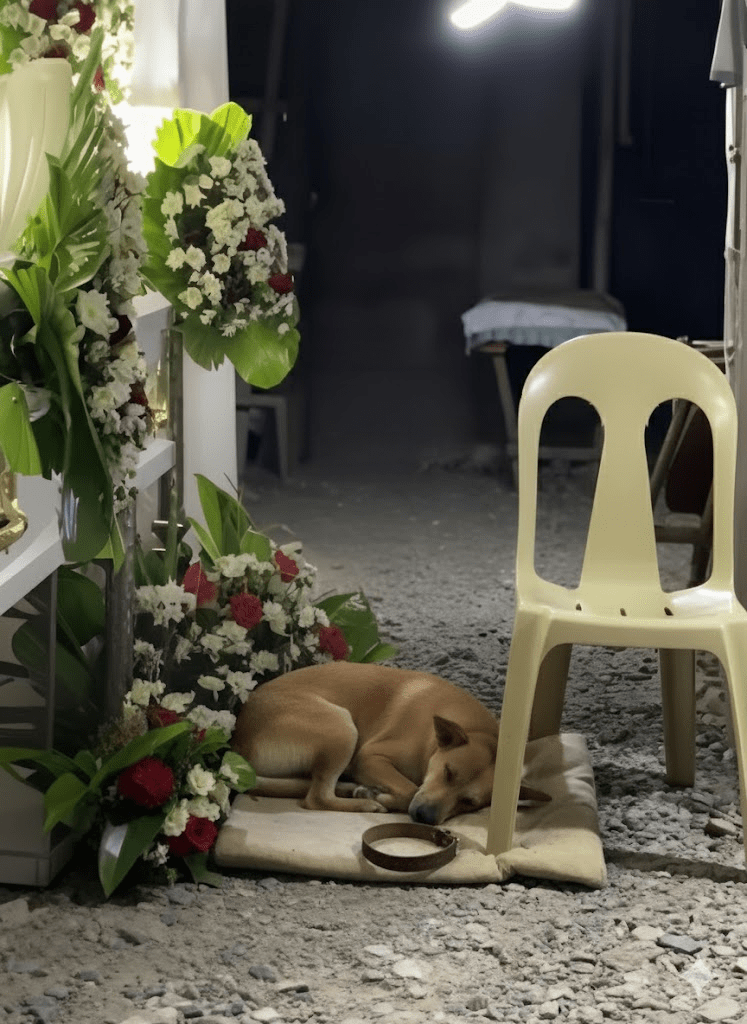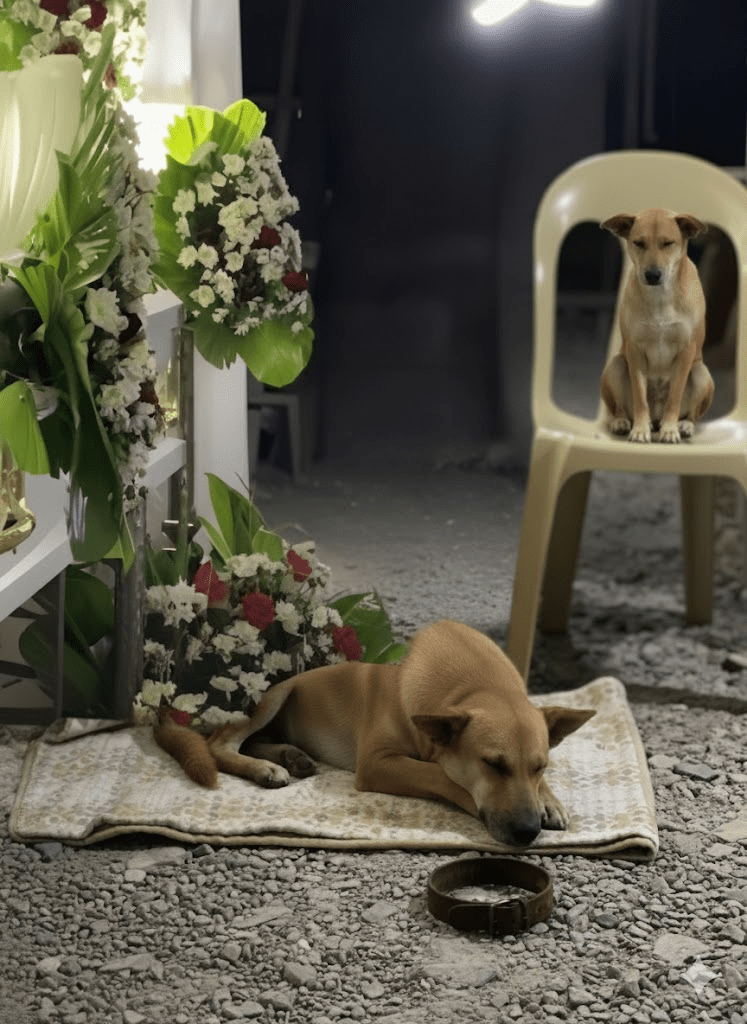In a world often bustling with human narratives, a singular image emerges, offering a profound glimpse into the unspoken world of animal emotion and loyalty. It depicts a humble scene: a dog, with fur the color of warm earth, perched solemnly on a simple plastic chair. Beside it, another identical chair stands empty, and in the periphery, floral arrangements hint at an occasion of quiet gravity, possibly a wake or a somber gathering. The dog’s posture—head bowed, gaze downcast—communicates a palpable sense of introspection, perhaps even sorrow or contemplation. This isn’t merely a candid snapshot; it’s a window into the nuanced emotional lives of our canine friends, challenging us to look beyond their playful antics and recognize the depth of their connection to human experiences, particularly during times of grief and loss. The image resonates because it mirrors a universal understanding of presence and emotional solidarity, suggesting that even in silence, and without the capacity for human language, profound empathy can be conveyed. It prompts a deeper inquiry into the roles animals play in our lives, not just as pets, but as sentient beings capable of sharing and reflecting our deepest feelings, forging bonds that transcend species.

This visual narrative invites us to explore the intricate tapestry of canine psychology, a field that continues to reveal the sophisticated emotional intelligence of dogs. For centuries, dogs have been lauded for their loyalty, a trait often expressed in overt acts of protection or joyful greetings. However, moments like the one captured in this image underscore a more subtle, yet equally powerful, dimension of their fidelity: their capacity for empathetic presence. Research in animal behavior has demonstrated that dogs can respond to human emotional states, showing signs of distress when their owners are sad or anxious. Their acute senses allow them to pick up on subtle cues—changes in tone of voice, body language, and even scent—that signal emotional shifts in their human companions. This deep understanding enables them to offer comfort in ways that often defy verbal articulation, becoming silent anchors in turbulent emotional seas. The dog in the photograph, with its quiet demeanor, embodies this profound empathetic ability, acting as a testament to the emotional reciprocity that defines the human-canine bond.

The setting of the image, with its subtle hints of a solemn gathering, further amplifies the emotional weight of the dog’s presence. In many cultures, animals, particularly dogs, have historically been integrated into rituals surrounding death and mourning. Whether as guardians of the departed, companions in the afterlife, or simply as comforting presences for the bereaved, their role in these profound human experiences is often overlooked. The quiet dignity of the dog on the chair suggests a participant, an attendee who, despite not fully grasping the human concepts of death or farewell, understands the emotional tenor of the moment. This understanding is rooted in their innate pack instincts and their deep-seated desire to remain close to their human family, especially when they sense vulnerability or distress. The dog’s stillness is not one of indifference but of watchful quietude, a silent vigil that offers solace without demanding anything in return.

Beyond the immediate emotional interpretation, the image also serves as a poignant reminder of the therapeutic power of animal companionship. In times of stress, anxiety, or grief, the unconditional love and non-judgmental presence of a pet can be immensely healing. The simple act of stroking a dog, listening to its gentle breathing, or merely having it close by has been shown to lower blood pressure, reduce cortisol levels, and alleviate feelings of loneliness. For individuals navigating the complex landscape of loss, a pet can provide a vital source of comfort and routine, grounding them in a world that might otherwise feel chaotic. The dog in the image, in its quiet sentinel role, embodies this therapeutic essence, offering a steadfast presence that speaks volumes without uttering a single word.

Furthermore, the image encourages us to consider the often-overlooked emotional experiences of animals themselves. While we project our interpretations onto the dog’s posture, it is crucial to acknowledge that dogs, like humans, can experience grief and loss. The departure of a beloved human family member can be profoundly impactful for them, leading to changes in behavior, appetite, and energy levels. They may search for the missing individual, exhibit signs of anxiety, or become withdrawn. Understanding and validating these animal emotions is a crucial aspect of responsible pet ownership and contributes to a more compassionate approach to interspecies relationships. The dog’s somber stance could very well be a reflection of its own processing of a significant absence, adding another layer of depth to the narrative conveyed by the photograph.







